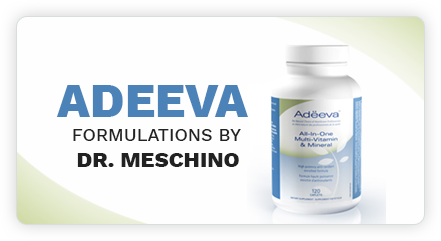
LMU 57 – Apple Cider Vinegar: Unveiling its Potential in Diabetes Management
Source: Medscape General Medicine Journal (2006) and Longevity Magazine Journal (2017)
Lifestyle Medicine Update (July 7, 2017)
Introduction
A captivating article in the June 29th, 2017, Longevity Magazine Journal turned the spotlight on the medicinal potential of Apple Cider Vinegar (ACV). A topic that has sparked curiosity among patients seeking health benefits, the discourse around ACV has often lacked scientific grounding. However, recent well-designed studies have illuminated its potential positive impact on diabetes management. ACV’s ability to modulate blood sugar levels and potentially enhance insulin sensitivity has emerged as a promising area of exploration.
The Science Behind ACV’s Impact on Blood Sugar
Understanding ACV’s mechanism of action unveils its therapeutic potential. While white distilled vinegars typically contain 4% to 7% acetic acid, cider and wine vinegars boast 5% to 6% acetic acid. Studies postulate that it is the acetic acid content that renders the blood sugar-lowering effect. Experimental evidence indicates that acetic acid retards carbohydrate absorption from the gut into the bloodstream by inhibiting specific carbohydrate-digesting enzymes within the intestinal tract. The enigma surrounding acetic acid’s potential enhancement of insulin sensitivity, subsequently reducing the body’s insulin demand, underscores the complexity of its interaction with diabetes management. This remarkable revelation holds profound implications for diabetics and prediabetics, as a decline in circulating insulin could mitigate the transformation of carbohydrates into fat, potentially facilitating weight loss.
ACV: A Catalyst in Post-Meal Blood Sugar Management
Numerous studies have underscored ACV’s influence on post-meal blood sugar management. An investigative study featuring non-diabetic subjects revealed that the incorporation of 20 mL of white vinegar (5% acetic acid) into a salad dressing curbed blood sugar escalation by 30% post consumption of a mixed meal. This meal encompassed a lettuce salad and white bread containing 50 g of carbohydrates. Collaborators compiling a glycemic index (GI) table for prevalent Japanese foods observed that the addition of vinegar or pickled foods to rice, such as sushi, slashed blood sugar elevation due to rice consumption by 20% to 35%. Further substantiating these findings, researchers like Ostman and colleagues documented that substituting a pickled cucumber (1.6 g acetic acid) for a fresh cucumber (0 g acetic acid) in a test meal yielded a 30% reduction in post-meal blood sugar elevation in healthy subjects.
In recent trials, participants afflicted with insulin resistance or type 2 diabetes partook in a vinegar test drink or placebo prior to consuming a mixed meal containing 87 g of total carbohydrates. Astonishingly, vinegar consumption prompted a staggering 64% drop in post-meal blood sugar in insulin-resistant individuals and a 34% enhancement in post-meal insulin sensitivity. Similarly, participants with type 2 diabetes experienced a 17% reduction in post-meal blood sugar and a 19% improvement in post-meal insulin sensitivity. These results reinforce the compelling potential of ACV in diabetes management.
Broader Implications and Considerations
Research involving “healthy subjects” has mirrored the positive impact of ACV on post-meal blood sugar levels and insulin sensitivity. A fascinating additional discovery lies in ACV’s potential role in promoting satiety, resulting in enhanced meal contentment, and reduced overeating tendencies.
While ACV’s positive influence on diabetes management shines, its broader impact on health conditions remains tentative. Presently, human studies lack sufficient evidence to affirm ACV’s efficacy in reducing blood pressure, preventing cancer, lowering cholesterol, or ameliorating arthritic conditions. However, for individuals grappling with elevated blood sugar or residing within the diabetic range, integrating ACV and vinegar-containing products within meals, such as oil and vinegar salad dressings, presents a pragmatic approach. Pickled foods rich in vinegar may also contribute to this strategy, albeit cautiously due to high salt content that could elevate blood pressure. For those seeking a potent ACV dosage, consider consuming 2 teaspoons or more of ACV mixed in water or juice with one or two meals daily. Moreover, supplements containing dehydrated apple cider vinegar, available in select health food stores, could serve as a viable option. Optimal consumption involves pairing these supplements or vinegar in any form with meals, promoting the deceleration of carbohydrate absorption and heightened insulin sensitivity.
Conclusion: ACV’s Pathway to Holistic Wellness
The June 29th, 2017 Longevity Magazine Journal article spotlighting ACV marks a pivotal juncture in understanding the potential of this unassuming yet potent nutrient. As its efficacy in diabetes management unfurls, ACV’s significance is underscored. The landscape of health and wellness is beckoning, inviting individuals to explore the avenues of ACV in curbing blood sugar levels and enhancing insulin sensitivity, ushering in a holistic approach to well-being.
References
- Johnstone CS, Gass CA. Vinegar: Medicinal uses and antiglycemic effect. Medscape General Medicine Journal. 2006. Published online 2006 May 30.
https://www.ncbi.nlm.nih.gov/pmc/articles/PMC1785201/ - Longevity Magazine Journal:
https://www.worldhealth.net/forum/topic/943/ - WebMD: http://www.webmd.com/diet/supplement-guide-apple-cider-vinegar

Dr. James Meschino
ABOUT THE AUTHOR
Dr. James Meschino, DC, MS, ROHP, is an educator, author, and researcher having lectured to thousands of healthcare professionals across North America. He holds a Master’s Degree in Science with specialties in human nutrition and biology and is recognized as an expert in the field of nutrition, anti-aging, fitness, and wellness as well as the author of numerous books.

